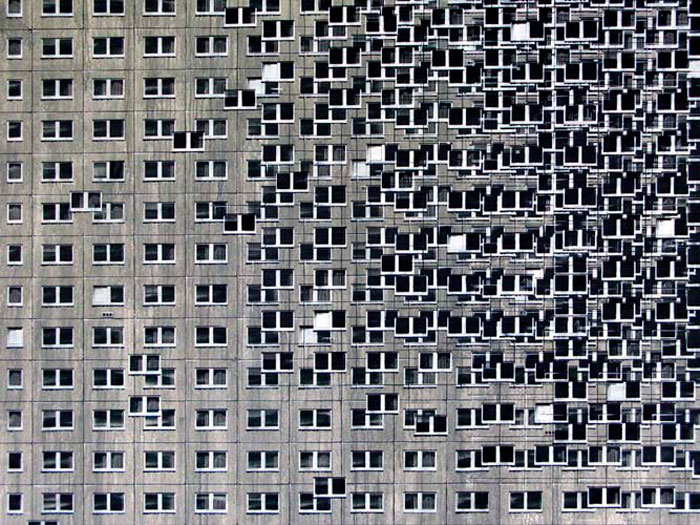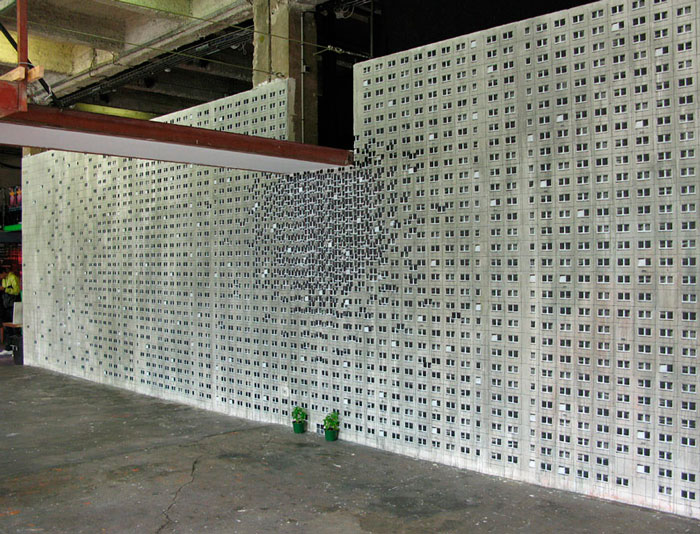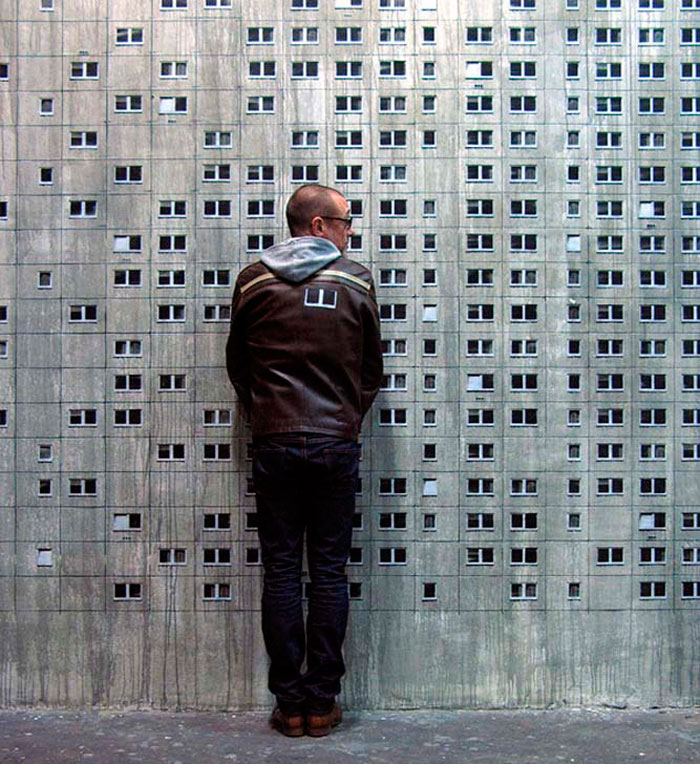1688 from on high
Feb 2, 2010

I know nothing about this picture, except that it was taken in Berlin. I like the little city in the circle there, but then I would. The gate is nice, too.
Feb 2, 2010

I know nothing about this picture, except that it was taken in Berlin. I like the little city in the circle there, but then I would. The gate is nice, too.
Sep 9, 2011
 Way, way out in the country, a million miles away from city lights, on a clear night the sky is lit by stars, as we see above at left, in a photo taken in Glacier National Park in Montana. The few small clouds in this starlit sky show up as black blotches that block some of the stars; a completely cloudy night in remote parts of the world is a very, very dark night, too dark to photograph at all.
Way, way out in the country, a million miles away from city lights, on a clear night the sky is lit by stars, as we see above at left, in a photo taken in Glacier National Park in Montana. The few small clouds in this starlit sky show up as black blotches that block some of the stars; a completely cloudy night in remote parts of the world is a very, very dark night, too dark to photograph at all.
In the megalopolis, however, clouds actually light up the sky by reflecting urban light pollution to brighten the night dramatically; an overcast night in a big city like Berlin, shown above at right, can be up to ten times brighter than a clear night.
Mar 12, 2012
 German artist EVOL works with stencils and spray paint on concrete walls, steel electrical cabinets, and plain cardboard boxes to create vast high-rise apartment blocks. For this installation in a Berlin parking garage, EVOL works a cross-beam into his creation as a crushing artistic blow.
German artist EVOL works with stencils and spray paint on concrete walls, steel electrical cabinets, and plain cardboard boxes to create vast high-rise apartment blocks. For this installation in a Berlin parking garage, EVOL works a cross-beam into his creation as a crushing artistic blow.


Jan 6, 2018
 In the wintry weather currently gripping eastern North America, icy mounds of frozen spray, known as sugarloaves, are growing huge atop frozen rivers below not-quite-fully-frozen waterfalls. There's a sugarloaf at the base of Niagara Falls this year, and also one at Montmorency Falls near Québec City; the falls at Montmorency are some 98 feet higher than Niagara and are located almost a thousand kilometers to the northeast, in a climate zone where every winter is plenty cold enough to make a sugarloaf.
In the wintry weather currently gripping eastern North America, icy mounds of frozen spray, known as sugarloaves, are growing huge atop frozen rivers below not-quite-fully-frozen waterfalls. There's a sugarloaf at the base of Niagara Falls this year, and also one at Montmorency Falls near Québec City; the falls at Montmorency are some 98 feet higher than Niagara and are located almost a thousand kilometers to the northeast, in a climate zone where every winter is plenty cold enough to make a sugarloaf.
The painting shown above, The Ice Cone, by Robert Clow Todd, shows Montmorency Falls and its sugarloaf in the winter of 1845. The place looked pretty much the same when we visited, in the winter of 2004, minus the horses, of course.
Tall, cone-shaped things with slightly blunted tips are often called sugarloaves, especially if they are ski resorts or a mountain in Rio de Janeiro with a statue on top. That's because real, old-school sugarloaves–actual hard, solid loaves of refined sugar–were produced in molds shaped like that. Up until the end of the nineteenth century, when manufacturing processes emerged to refine sugar into a granulated product, people who could afford to buy white sugar–meaning rich people–bought it by the loaf, which might weigh as much as 30 or 35 pounds. They chipped off pieces as needed, using heavy, sharp-edged pliers known as sugar nips.
The sugarloaves pictured below are on display in the Sugar Museum in Berlin.